The sui generis ethos of interior designer Frank Stüve
Be True to Yourself
-
Function and layout plans by Frank Stüve Interiors
Photo © Jochen Arndt
-
Textile archive at the Frank Stüve Interiors studio
Photo © Jochen Arndt
-
Interior by Frank Stüve
Photo © Jochen Arndt
-
Interior by Frank Stüve
Photo © Jochen Arndt
-
Living room interior by Frank Stüve
Photo © Jochen Arndt
-
Interior by Frank Stüve
Photo © Line Klein
-
Interior by Frank Stüve
Photo © Line Klein
-
Villa Harteneck interior concept by Frank Stüve
Photo © Mark Seelen
-
Interior by Frank Stüve
Photo © Jochen Arndt
-
Villa Harteneck interior concept by Frank Stüve
Photo © Mark Seelen
-
Interior by Frank Stüve
Photo © Jochen Arndt
-
Tabletop arrangement by Frank Stüve
Photo © Jochen Arndt
-
Floral arrangement by Frank Stüve
Photo © Jochen Arndt
-
Bathroom design by Frank Stüve Interiors
Photo © Jochen Arndt
-
Kitchen design by Frank Stüve Interiors
Photo © Jochen Arndt
-
Tabletop accessories by Frank Stüve
Photo © Line Klein
-
Villa Harteneck interior concept by Frank Stüve
Photo © Mark Seelen
-
Villa Harteneck interior concept by Frank Stüve
Photo © Mark Seelen
German interior designer Frank Stüve is a quiet over-achiever on the Berlin design scene. Always full of surprises, he got his start working as a florist in Vienna, where he so impressed his clients that soon one of them offered him the opportunity to open his own business. Along with business partner Gisela von Schenk, he launched interiors concept store Villa Harteneck, where he went from strength to strength, expanding his practice from flower arrangements to interior accessories and furniture, progressively taking over more and more of the heritage-listed villa set in one of Berlin’s most beautiful parks. Over the course of his 13-year tenure there, Stüve built Villa Harteneck into an absolute institution for luxury interior accessories in Berlin’s western suburbs.
In 2012, with his reputation and fan base well established, he decided to branch out on his own and open his eponymous atelier closer to Berlin’s city center. These days, he works with a range of A-listers, from German movie-stars to heads of industry, offering discrete and minutely personalized interior stylings.
We sat down with the charming and in-demand interior designer to find out how he defines his own style, what makes his studio special, how he approaches each new project, and much, much more.
Gretta Louw: Your path to interior design has been unusual; how are your previous roles incorporated into your current practice?
Frank Stüve: Villa Harteneck started out as a sort of conceptual florist shop before moving into showing furniture. People in Berlin still think, “oh, that’s the florist who also does furniture.” And that remains my foundation, even in my work today. For me, it’s all about color, form, and the haptic—all things that are important in floral design as well. These days, working with my team of interior architects, doing real planning work—like bathrooms, kitchens, etc.—we’re still putting all the elements together to create a house, just like arranging a bouquet. I loved my profession—the immediate joy you bring someone when you create the perfect arrangement for them—but I don’t do bouquets anymore! [laughs]
What I learned from the experience at Villa Harteneck was that the creative work was often diluted by the fact that we were selling the furniture. These days, my studio focuses on interior design concepts; the creative side of things. We might work with a client’s heirloom furniture, go shopping with them at flea markets in Paris, or source pieces from Pamono. We do the concept design, and it’s no longer about actually selling specific. We can be much more flexible.
GL: So how does an interior concept look when it’s finished? What’s the process?
FS: We get started as early as possible, especially if it’s a new building project. We go in with the architect and the client, and the first step is to create a functional plan: How should the space work for the client and their family? Do they cook at home often? Do they have a lot of guests, and if so should the living spaces be chic and impressive or more familial and cosy? We try to uncover the authentic lifestyle and preferences of the client. It’s often a sort of coaching process.
So, maybe the client says, "My husband gets home late and needs his peace and quiet." Then we might then include a separate, private dining niche for the parents in addition to the central family dining table. The functional plan always comes first, and then we work on the layout, using placeholder pieces to plan the size and arrangement of the furniture. Next, we’ll work on a lighting plan—that’s crucial.
When all those elements have been signed off by the client, we usually take them into our textiles archive, where we have every imaginable textile, wallpaper, and carpet. It’s a process of finding inspiration. We ask the clients to choose their favorite textiles or color combination, and we blend those ideas into the larger interior concept. Again, it’s a matter of coaching and weighing up different elements.
For example, in grey Berlin too much turquoise can look a bit fake or kitsch, so we might advise going for turquoise highlights—cushions or lighting pieces—rather than major pieces like a sofa. In putting together the palette, we look at any artworks the client has. Of course artists always hate it if you say you’re selecting curtains to match their work [laughs], but we also don’t want to work against any strong colors that are already there.
After choosing floor coverings and wall colors, the last step is selecting the actual furniture. We’ll make materials collages, look at favorite pieces the client already owns, and then research specific pieces, materials, and colors so that we can make concrete recommendations to the client.
GL: Your interiors have a very specific style, even though they’re all quite unique. It’s something to do with the way you combine objects. There’s such an aesthetic richness to the overall arrangement.
FS: The textures of things is always very important to me—it’s probably my background in floristry again. So, leather and brass, or velvet (but not too much) with a rustic, rough wood. I’m always looking to create a bit of tension between the different surfaces. I wouldn’t put velvet with a brass or a mirrored table. As far as I’m concerned, take an antique Belgian farmer’s table and then put a velvet armchair with that. Or, if I’m working with a high gloss dining table, I’d look for chairs that are suede or perhaps linen—something that has a bit of texture and offers some contrast.
The goal is that the arrangements always look like they could have come together by chance, and that only happens when you’ve mixed the elements well. People don’t like to live in spaces that were obviously designed by a specific interior design studio, because they always do the same things. I’d rather go a different way, look for new combinations. If we need 12 dining chairs, we order 10 and source two at a flea market—or we use the drums that they bought in Bali as side tables. It gives the client a story to tell.
GL: This sort of eclectic style of interior design—using imported pieces that might be cultural artefacts—can be quite problematic and get into the territory of cultural appropriation. How do you deal with these issues?
FS: A house should reflect the people who live there. Many people travel a lot these days. I work with young families, for example, who’ve travelled extensively in Asia with their young children, to give them a perspective on other cultures. They’re then not afraid of having, say, a room inspired by traditional Japanese culture because they all spent time there and fell in love with it. It’s artificial if someone who’s never left Berlin suddenly has a Balinese table. Eclecticism is a very broad term. Anything can be eclectic, but it has to reflect the person who’s living there.
GL: You often work at the higher end of the market. What’s your idea of luxury?
FS: These days, I think luxury is more about having time than an expensive sofa. At the fairs in Milan, there are these so-called "luxury brands"—but it’s actually a total misnomer. They’re not about luxury; they’re just expensive.
It’s a luxury to have a home at all and to be able to have it decorated. There are people around who only consider the price tag; it has to be expensive or it isn’t luxury. But, actually, a fabric in exactly the right hue doesn’t have to cost more than any other. The luxury is in having the perfect hue and good quality fabric, not in the label or price. For me, the word "luxury" almost always has a negative connotation.
A couple of years ago we had a client who was moving from London into a 30-square-meter apartment in Berlin. He said, "Oh, I’m sure you would never take on a small project like mine." But I said, "No, that’s exactly what interests me about it!"
Li Edelkoort said a few years ago that interior designers need to learn how to deal with smaller spaces, because more and more people will be living in these sorts of spaces in the future. They’re not going to be living in 200-square-meter apartments anymore. They’ll have a one-bedroom city apartment and perhaps a country house. Or only the apartment, but they travel a lot. And everything they need has to be in that small space—comfortable sofas, a great dining area, and so on. Having everything you need in a small, self-contained space is also a luxury. Perhaps that’s it; luxury is just having everything you need.
GL: Agreed. That being said, though, looking at your previous work, you’re clearly not a minimalist! [laughs]
FS: Yes, it’s true. Well, I think a minimalist style is actually the easiest to achieve. Take a room, add two sofas and a console table that underlines the formal qualities of the sofas and voila. But we only very rarely work with clients like that. On the other hand, though, I hate the word "opulent." We might do minimalist sofas, but we’ll use a rust-coloured upholstery and perhaps petrol cushions, so there’s a lot going on.
But, sure, we can gladly do minimalistic—it’s simple! Polished cement floors, white sofa, and perhaps some interesting pictures on the wall. No, I guess I’m not a minimalist. Having said that, sometimes I’d love to just have a fabulous wallpaper and one armchair in front of it and leave the rest of the room empty. But it just isn’t feasible in everyday life.
GL: Your attention to detail, the way you arrange tabletop objects, floral elements, decorative sculptures and so on—it’s almost a trademark of yours. Do you consider yourself a maximalist?
FS: Maximalist is a term you don’t hear as often as minimalist! I always think accessories are very important to consider at the end of a project, because they tell a story and bring life into an interior. Sometimes I have to work against the image that I’m all about decoration. But photographers that I work with always love it. I’m trying to clear things away, but they want to shoot it because the combination in beautiful. Perhaps I just need to be true to myself! [laughs]
-
Text by
-
Gretta Louw
A South-African born Australian currently based in Germany, Gretta is a globetrotting multi-disciplinary artist and language lover. She holds a degree in Psychology, and has seriously avant garde leanings.
-
More to Love
French Art Nouveau Mahogany & Velvet Side Chairs, 1910s, Set of 2

Philodendron Grande Cushion from GAIADIPAOLA
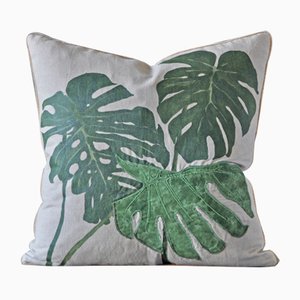
Chrisanthemum Cushion from GAIADIPAOLA
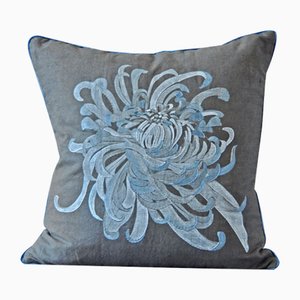
Caramelle Due Cushion from GAIADIPAOLA
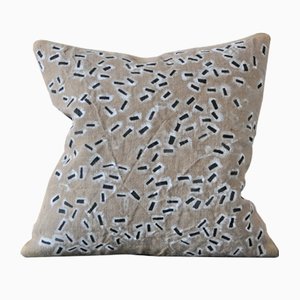
Brass Bamboo Floor Lamp, 1960s
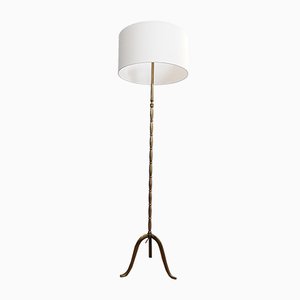
Art Deco Armchair by Lion Cachet, 1929

Rio Cushion by Casa Botelho
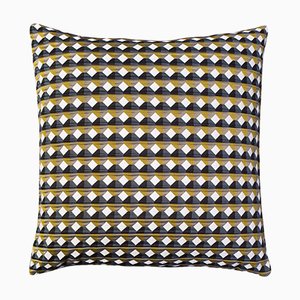
Taliesin Barrel Chairs by Frank Lloyd Wright for Cassina, 1980s, Set of 6

Grey Multi Crystalline Rectangular Cushion by Other Kingdom
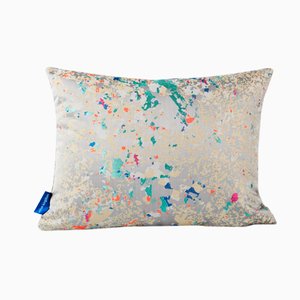
Vintage Club Chair, 1930s
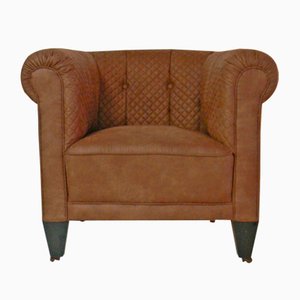
Abrek Biscuit Porcelain Jug in White by Zpstudio
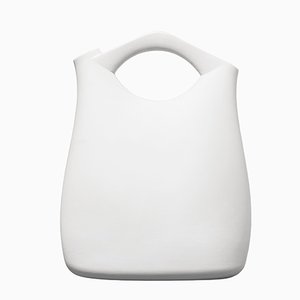
Coyoacán Chair by Moanne

Vintage Maralunga Sofa by Vico Magistretti for Cassina

Partenope Tray Table in Cb1 Pattern Marquetry & Brass by Architetti Artigiani Anonimi
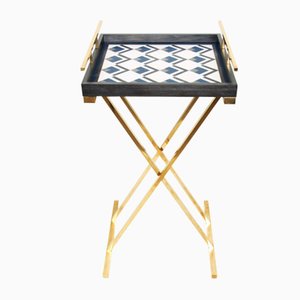
Vintage Solid Oak Nesting Tables or Benches, Set of 3




















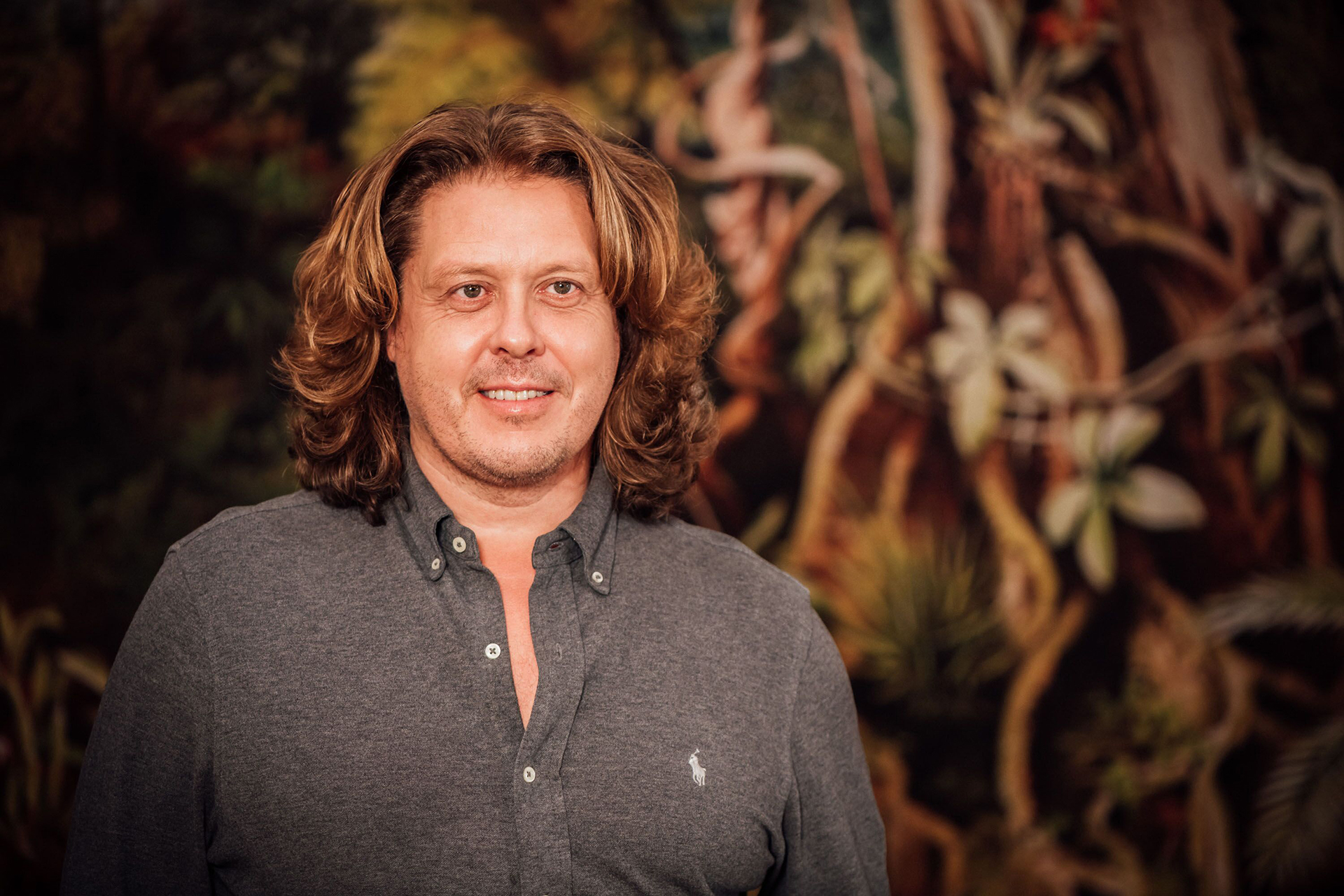 Interior designer Frank Stüve
Photo © Jochen Arndt
Interior designer Frank Stüve
Photo © Jochen Arndt
 Frank Stüve Interiors textile archive
Photo © Jochen Arndt
Frank Stüve Interiors textile archive
Photo © Jochen Arndt
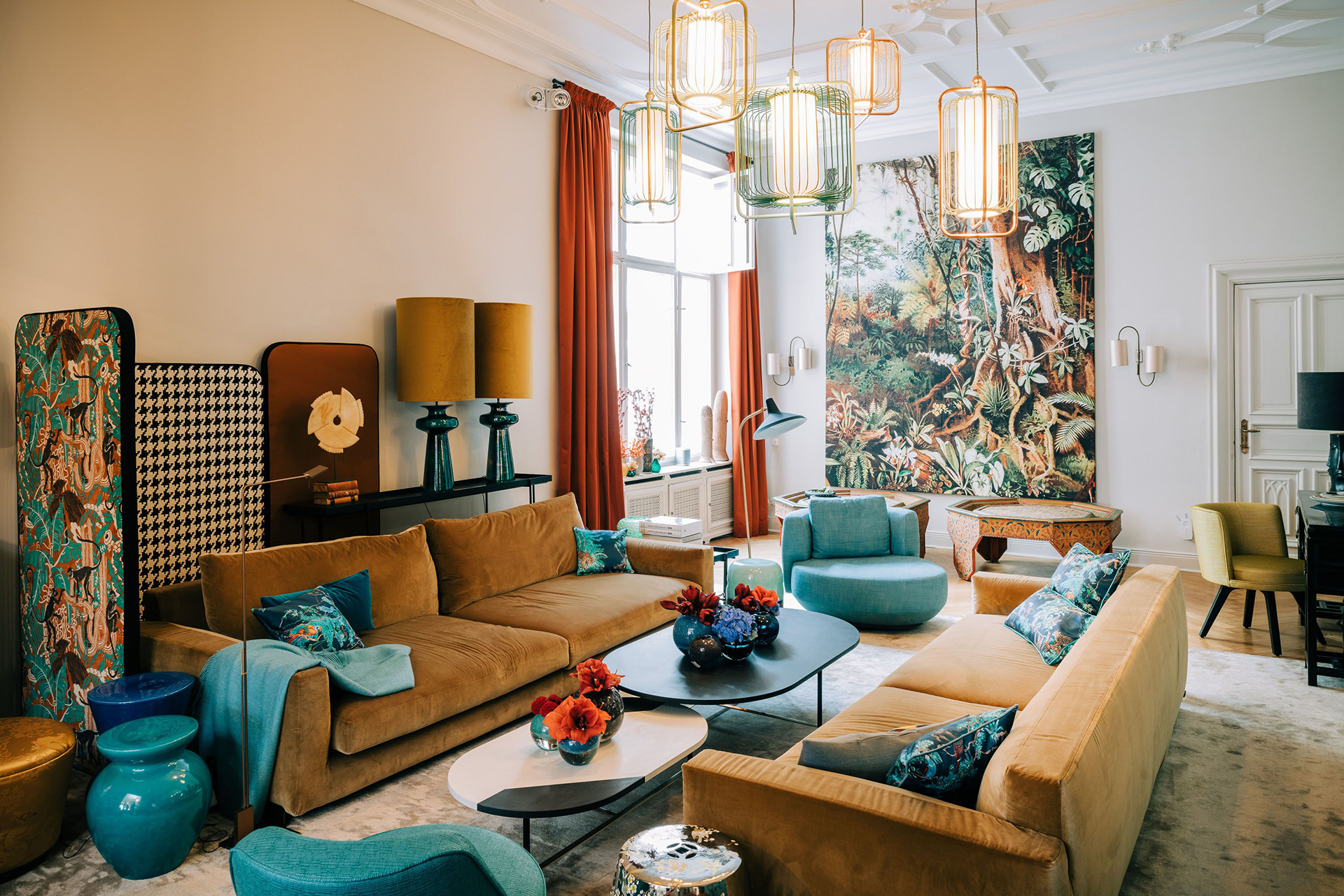 Berlin apartment interior
Photo © Jochen Arndt
Berlin apartment interior
Photo © Jochen Arndt
 Villa Harteneck interior concept by Frank Stüve
Photo © Mark Seelen
Villa Harteneck interior concept by Frank Stüve
Photo © Mark Seelen
